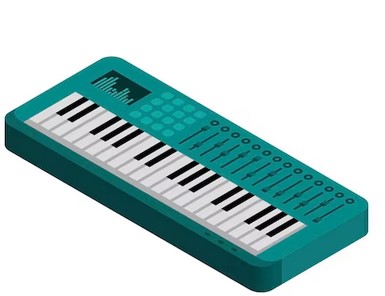Język javascript obsługuje odczyt z portów MIDI
Najczęściej mówimy o instrumentach muzycznych podłączanych przez USB do komputera.
Podstawowy program API:
1 2 3 4 5 6 7 8 9 10 11 12 13 14 15 16 17 18 19 20 21 22 23 24 25 26 27 28 29 30 31 32 33 34 35 36 37 38 39 40 41 42 43 44 45 46 47 48 49 50 51 52 53 54 55 | <!DOCTYPE html> <html lang="en"> <head> <meta charset="UTF-8"> <meta name="viewport" content="width=device-width, initial-scale=1.0"> <title>Document</title> </head> <body> <script> navigator.requestMIDIAccess() .then(onMIDISuccess, onMIDIFailure); function startLoggingMIDIInput(midiAccess) { midiAccess.inputs.forEach((entry) => { entry.onmidimessage = onMIDIMessage; }); } function onMIDISuccess(midiAccess) { console.log(midiAccess); for (const entry of midiAccess.inputs) { const input = entry[1]; console.log( `Input port [type:'${input.type}']` + ` id:'${input.id}'` + ` manufacturer:'${input.manufacturer}'` + ` name:'${input.name}'` + ` version:'${input.version}'`, ); } startLoggingMIDIInput(midiAccess); var inputs = midiAccess.inputs; var outputs = midiAccess.outputs; } function onMIDIMessage(event) { let str = `MIDI message received at timestamp ${event.timeStamp}[${event.data.length} bytes]: `; for (const character of event.data) { str += `0x${character.toString(16)} `; } console.log(str); } function onMIDIFailure() { console.log('Could not access your MIDI devices.'); } </script> </body> </html> |

